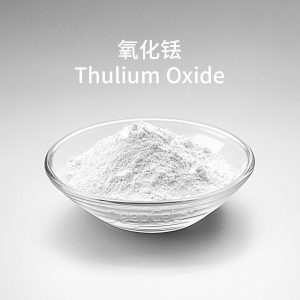Neodymium fluoride, as an important rare earth fluoride, has unique application value in materials science, electronics, and thin film preparation. It can provide a specific element doping source for related fields, used to prepare functional materials with special properties.
Chemical properties
- Solubility: insoluble in water, can undergo a certain degree of dissolution reaction in acidic conditions
- Thermal stability: It has a high thermal stability, and can maintain the relative stability of chemical composition and structure in a high-temperature environment.
- Optical properties: It may exhibit certain optical absorption or emission characteristics at specific wavelengths, but its optical properties are not necessarily the most prominent compared to other rare earth fluorides.
- Magnetic properties: It has a certain magnetic property and belongs to paramagnetic substances.
Application fields
Film preparation
- Optical Thin Films: Using technologies such as Physical Vapor Deposition (PVD), thin films with specific optical properties are prepared by utilizing neodymium fluoride targets. These films are applied in optical filters, mirror coatings, etc.
- Functional Films: In the fields of semiconductors, superconductors, etc., used to prepare films with specific electrical, magnetic, and other functional properties.
Material doping
- Ceramic materials: As dopants, added to ceramic materials to improve the electrical, optical, or thermal properties of ceramic materials.
- Metallic materials: used for surface modification or alloying of metallic materials, endowing metallic materials with new properties
Other applications
- Sensors: Based on their chemical and physical properties, they are used to prepare specific types of sensors, such as gas sensors, magnetic field sensors, etc.
- Laser technology: In certain laser devices, participating in the process of laser generation and control as gain media or optical components.



